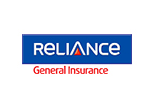How to Claim Car Insurance For Own Damage in India?
Own Damage Car Insurance Claim
Filing a claim with your auto insurance company can be a stressful experience, especially if you aren't familiar with how the claims process works. Therefore, it is absolutely necessary to have a thorough understanding of the procedures as well as the types of documents that are required in order to substantiate a claim. Here’s a thorough how-to guide for filing an own-damage auto insurance claim in India so that you don’t have to worry about a thing!
Table of Contents
What is an Own Damage Insurance Claim?
Under your comprehensive or standalone own damage car insurance plan, you can claim for the damages incurred to your own vehicle in case of an accident. Raising a request to get compensation for damages incurred to your own vehicle is called an Own Damage Insurance Claim.
Please note that post raising a claim request, an insurance company would get the condition of the car surveyed through a surveyor to check for the authenticity of the claim. Post that, the surveyor will share the survey report with the insurer, who will decide how much claim settlement can be given, if at all.
Before we understand the claim filing process, let’s understand what different types of claim settlements exist.
Types of Claim Settlements -
Under an own damage car insurance plan, multiple types of claim settlements are possible -
1. Cashless claim settlements:
One of the most popular and widely used ways of settlement is cashless claim settlement. Policyholders who get a cashless claim settlement can choose to have their cars fixed at a network garage connected to the insurance company. Except for the policyholder's deductible and any non-covered expenses, which the policyholder is responsible for paying, the insurance company pays the garage directly for the repairs.
2. Payment Claim Settlement:
Using this technique, the policyholder pays for the repairs upfront at the garage of their choice, has the automobile fixed, and then files a claim for reimbursement from the insurance provider. The policyholder is required to provide the insurer with any pertinent invoices and paperwork. The authorised claim amount is reimbursed by the insurer upon verification.
3. Total Loss Settlement
A car is deemed a total loss if damage reaches the point where repairs are more expensive than the insured declared value (IDV) or if there is irreversible damage. In certain situations, the insurance company reimburses the vehicle's IDV. After that, the insurance company usually owns the salvaged vehicle.
4. Constructive Total Loss Settlement:
A constructive total loss is when the vehicle is not totally destroyed but the cost of repairs is more than a certain threshold (often 75% of the IDV). The salvage becomes the insurer's property when the insurer pays the IDV, much like in total loss claims.
5. Settlement of Theft Claim:
In the event that the insured vehicle is taken and not found, a theft claim may be made. In order to prove that the car cannot be found, the policyholder must get a non-traceable certificate from the police. After that, the policyholder receives payment from the insurer using the vehicle's IDV.
6. Part Depreciation Claim Settlement:
Rubber, plastic, and metal components, among other sections of the car, all experience depreciation over time. The insurance company will pay the claim after discounting the parts' depreciation value if these are replaced following an accident.
7. No Claim Bonus (NCB) Protection:
A policyholder receives an NCB, or discount on the premium for the next year, if they haven't filed a claim during the prior policy period. Certain insurers provide NCB protection as an add-on so that the policyholder keeps the discount even in the event of a claim.
How to File an Own Damage Car Insurance Claim in India?
A car insurance coverage protects you in the unfortunate case of an accident or mishap that results in damage to your car. In addition to providing coverage for injuries to other people, a comprehensive auto insurance policy also covers personal damage or harm to your own vehicles. In India, filing an insurance claim for personal injury involves following specific guidelines and is a methodical procedure. Here, we'll outline the exact steps that must be taken in order to file an own-damage auto insurance claim in India.
Step 1: Notify the Insurance Provider
It is critical that you notify your insurance company of the damage right away. The amount of time you have to notify the damage varies throughout insurance carriers. This window of opportunity usually opens 24 to 72 hours after the damage or disaster occurs. If available, you can contact the insurance company by phone at a toll-free number or via a mobile application.
Step 2: File an FIR.
It is required to file a First Information Report (FIR) at the closest police station in cases involving significant damages or third-party damages. When a claim is being settled, the FIR will be needed as an official record of the incident.
Step 3: Document the Damage
Make sure you accurately document the damages before moving forward with the repair process. It is a good idea to record the damages using pictures or videos shot from various perspectives. These records will serve as evidence of damage and facilitate the quick and easy handling of your insurance claim.
Step 4: Visit the Authorised Service Centre
After completing the necessary paperwork, you should take your car to a garage. Ideally, it should be affiliated with your insurance company or an authorised service centre. Typically, the insurance provider maintains a list of network garages that offer cashless services.
Step 5: File a Claim
You will have to complete a claim form with information on the accident and the amount of losses you received. The claim form can be downloaded from the insurance provider's website or obtained at the service centre.
Step 6: Allow Inspection and Evaluation of Damage
The insurance company will assign a surveyor to determine the amount of the damage after the claim form is submitted. To examine the car and assess the damage, the surveyor would come to the garage. The surveyor's report would be used to calculate the claim amount.
Step 7: Make repairs and settle claims
The service centre will start the repair process as soon as the surveyor gives their approval. After the repairs are finished, the insurance provider will pay out on the claim. The insurance company will pay the service centre immediately if you have opted for cashless services. Remember that when you file a reimbursement claim, you first have to cover the cost of the repairs. Then, when you provide the required paperwork and bills, the insurance company will pay you back.
Step 8: Submit Documents
To ensure a seamless procedure of settling claims, you would have to provide the insurance company with a few documents. These records could consist of:
- A completed claim form
- A copy of the insurance policy
- A duplicate of the registration certificate (RC) for the car
- Driving record of the individual operating the vehicle at the time of the collision (if a report has been made)
- Repair invoices and payment receipt (in the event that reimbursement claims are made)
Step 9: Request Approval
The insurance company will authorise the claim following the required verification of the provided documentation. In the event that you are dissatisfied with the amount approved, the corporation may also provide you the option to appeal against the claim amount.
What documents are required for filing an own damage claim?
Typically, you would need the following documents to file your own damage claim:
- Duly filled claim form
- Copy of the insurance policy
- Copy of the vehicle’s Registration Certificate (RC)
- Driving licence of the person driving at the time of the accident
- FIR copy, if applicable
- Repair bills and payment receipts (for reimbursement claims)
Additional Tips To Keep in Mind!
Maintain a Complete Record
It's helpful to keep a thorough record of the discussions you have with the insurance company, including:
- The contact person's name
- The date
- The time of the conversation.
Remember that filing a claim will have an impact on your No-Claim Bonus (NCB). Assess, therefore, if the claim amount is sufficient to waive the NCB benefit for that particular year.
Ensure Thorough Knowledge of the Policy
Make sure that you understand the terms and conditions of your policy properly. In order to prevent any confusion while settling claims, you must be aware of both the inclusions and the exclusions.
Also, remember that if you have personal accident coverage as a part of your policy, your injuries will also be covered by the same.
In summary
In India, filing a claim on your personal damage auto insurance follows a set procedure. It can be less intimidating if you are familiar with the procedures and have all the required paperwork available. Additionally, a hassle-free claim settlement can be facilitated by following the insurance company's rules and collaborating with the surveyor. Never forget that prompt notification to the insurance company and thorough documentation are essential for a seamless claim process.
FAQs
- What is covered by "Own Damage" in an auto insurance policy?
The coverage offered for losses incurred by your vehicle in the event of an accident, fire, theft, or natural disaster is known as "Own Damage" coverage in an auto insurance policy. It shields you from financial losses brought on by having to replace or repair damaged auto parts.
- How can I contact my insurance company to start an own damage claim?
In order to initiate the process of filing a claim for personal property damage, it is advisable that you promptly contact your insurance provider. You can accomplish this by visiting the insurer's website, downloading their official mobile application, or calling their toll-free number. You would be required to provide all pertinent information, such as the policy number, the accident's date and time, and a brief account of what happened.
- What is the deadline for filing a claim for my own damages?
Answer: Although the timeframe for filing an individual damage claim varies from insurance provider to provider, it typically opens 24 to 72 hours following the incident. It is always in your best interest to confirm the specific time period stated in your insurance policy document.
- Is it required to register a formal complaint for personal injury?
Resolving own damage claims does not necessarily require filing a formal complaint, particularly in cases of minor damages. Nonetheless, filing a formal complaint (FIR) at the closest police station is required in situations involving serious accidents, theft, or situations involving harm or damage to third parties.
- Can I get the repairs done at any garage or service centre?
You are free to select any garage to handle the repairs. However, you can use cashless services if you choose a network garage connected to your insurance company. In doing so, the insurance company pays the garage directly for the repairs.
- How does a surveyor function within the framework of a claim?
In order to ascertain the extent and gravity of the damage, the insurance company dispatches a surveyor to examine the totaled car. They will generate an extensive report that will form the foundation for the insurance company's decision about the number of claims that can be accepted.
- How does my No-Claim Bonus (NCB) change if I file an own damage claim?
Typically, when you file an own damage claim, your No-Claim Bonus for that specific coverage year is forfeited. The NCB is a premium reduction that insurers provide to customers who maintain a claim-free record throughout the duration of the policy. When submitting a claim, it is advisable to consider the advantages and disadvantages, particularly for small losses.
- Can I file an appeal if I'm not happy with the approved claim amount?
If you disagree with the amount your insurance company authorised for your claim, you have the option to file a claim amount appeal. To better understand the elements taken into account when deciding the claim amount, it is crucial to have a thorough discussion with your insurer before initiating an appeal.
- Is it possible to add additional coverage while filing a claim?
The answer is that add-on coverages, such engine protect or zero depreciation cover, cannot be acquired at the time of filing a claim; they must be purchased when the insurance is purchased or renewed. When acquiring or renewing your insurance, it's wise to check and include any necessary add-ons to improve your coverage.















































